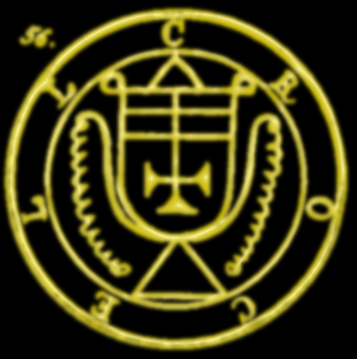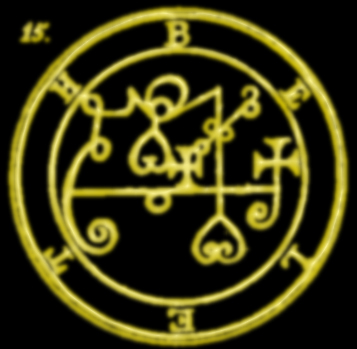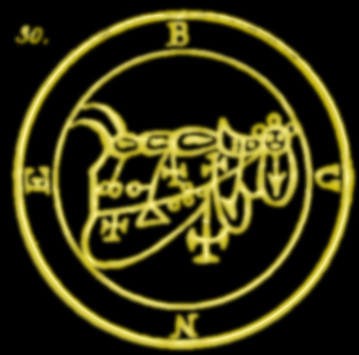Word
Every word is the title of the story of its meaning. Any story can be unwound like DNA to expose its memetic elements, elements inherited from prior stories, elements gleaned from the experiences of the storytellers, elements mixed in from other stories in the minds of the listeners.
The DNA/genetics model covers this seemingly complex self-replicating, self-modifying and externally influenced chemistry of words nearly perfectly, down to the interplay of sounds and written letters being modeled by the interplay of RNA and DNA.
I’m not going to get bogged down in the details of the metaphor — which I personally suspect is somewhat stronger than a metaphor, but that’s the best word I can bring to bear at the moment without sounding needlessly prophetic — because I’d like what I’m about to say to be accessible to people who 1) haven’t stuffed as much science in their heads as I’ve tried to or 2) prefer to look things up for themselves anyway, and 3) the further I stretch things the more likely I am to include some kind of error that won’t actually impact my message here much but will lead into some kind of pointless argument.
Stories that are told and retold reproduce biologically. Not necessarily sexually, deliberately combining elements from different stories to see what sort of children are viable. Think of it more like a plant that sends out runners, or something quite a bit more primitive that reproduces by splitting off a bud that grows into a nearly identical copy to the original.
I say nearly because there are always environmental factors, viral factors that take genetic material from one source and insert it in another cell, epigenetic interference, and sometimes simple bad luck that can cause transcription errors that get passed down. Those errors are mutations — and if they make the story inconsistent, confusing, irrelevant, or incomprehensible, then they aren’t viable in their hosts. We stop passing them along in favor of different, more relevant, more useful stories. Stories we can understand.
Evolution is a touchy subject in the educational and cultural backwaters of the USA, but some of the pieces of evidence for it seem to be more easily accepted piecemeal. The fossil record (which, if one ignores the time scale of dating methods, provides little to disturb the literal interpretation of the events of Genesis — a particular sticking point) and adaptation due to environmental or ecological pressures (which we can see happen over the course of a single lifetime in species with an annual reproduction cycle) are entirely sufficient for the purposes of analogy, given that I’m thinking of only the last ten thousand years or so anyway.
Written literature is a fossil record. Without a living sample of the culture it was produced and living in, an enormous amount of the story is subject to conjecture — whether people took it seriously, how certain sections were interpreted, the meanings of individual words that have since fallen into disuse or changed meaning entirely, missing pieces we have no idea are missing because nothing refers to them — and since stories are open-ended, you can’t exactly look at a piece, declare it’s a jawbone, and reconstruct what the rest of the animal looked like.
Prior to writing, stories were soft-bodied pre-Cambrian things, transmitted only via oral traditions, preserved by rote memorization, subject to easy embellishment and on-the-fly editing. They weren’t completely without structure, being supported by mnemonic devices like repetition, rhyme, rhythm, and musical and dance accompaniment, but they were much, much softer. Even so, a story, sometimes even the introduction of a single new word, was the magic that would change a listener’s mind, and the most powerful and useful ones were preserved.
Anyway, I had a point when I started laying down this foundation, and the point was to address a lie I’ve been seeing circulating. I’ll get to that in a minute.
But stories drift, either oral or written. Written stories undergo massive changes any time they are translated, every time the language is updated to make it accessible to a new generation due to drift in grammar and the meanings of the words of which the stories are comprised. Stories change in impact and undertone when events happen that cast the depictions of events in the stories in a new light. Stories change when people name their children after people in the stories, and those children act in ways inconsistent with the recorded participants.
If you keep careful records, and also keep careful records of as many cultural and contextual details as possible, you can preserve very old versions of the stories. If you analyze a number of old stories and old fragments in the literary fossil records in terms of the elements those stories have in common, you can reach even further back and reconstruct even older versions of the stories, though you run the risk of including errors and the taint of modern thinking — or, more frequently, just not understanding what you’ve recovered because you have insufficient context even for the popular meaning of the words you’ve translated.
Even taking all of that into consideration, people with a mind to do so, and the proper resources, can track the elements of a story back thousands and thousands of years. And the particular story I have in mind is the story of El Elyon of the priest Melchizadek (Malki Tzadek) of Jewish and Christian faiths, Illiyyah of the Samaritans, and Allah of the Muslims, and so on into more modern denominations. All of these faiths pin their beliefs to their written materials, and all of these stories go back to characters of the same names, performing the same actions. Abram (renamed Abraham) and Sarah, Ishmael and Isaac, Moses (Musa) and Aaron (Harun), Noah and the flood.
Elements of the stories above appear in the fossil record predating the earliest work viewed as a core to a modern religion as well. Noah’s flood and ark belonged to Utnapishtim of Akkadian/Sumerian/Babylonian stories. And there are other memetic markers that show common ancestry elsewhere, almost certainly hinting at familial relations among the religions of the area: The Bull of Heaven of Gilgamesh seems remarkably similar to the rampage of Egypt’s Hathor. Al-Khidr of the Muslim faith bears elements of the Sumerian Apkallu/Apgal fish-men sages that gave the old kings the me, the tokens and concepts that are the foundations of law and civilization. Roman Jove/Jupiter has been linked by name and taste for animal sacrifice to the god of the Jews as well, and arguments have been made that Abraham mentioned above is preserved in Hindu tradition as Brahma. I could list these markers for hours and hours, some sketchier than others, and not get to the end of them.
Fun though that might be, I need to address the lie I mentioned previously, and that lie is that Allah of the Muslim faith is not the same as the god of Jewish- and Christian-derived faiths. The strife of Judeo-Christian faiths against Islam is a fight between brothers according to both traditions, between Ishmael and Isaac, extended through three thousand years, over land and birthright. It is not a fight over whose god is the true god, because they are the same god. That has never been in question.
The people who spread that lie only do so to keep the conflict hot and fervent so as to keep up the price of oil, preying on the gullibility of the ignorant and convincing them there’s not just a threat to supply of critical resources, but to their very way of life. That’s bullshit. The threat is not even to the stored wealth of these people, but to the stream that brings them even more money, to the repeat of the $40 billion they made in record profits last year, not counting the $4 billion they received in tax breaks. I don’t know what your personal definition of evil is, but I’d hope it includes people that would throw gasoline on someone else’s fire to keep up the price of gasoline.
These people know they are all children of Abraham. If they all worship God differently, to the extent that they squabble among themselves to the point of killing each other over which way is the right way and which prophets are the most revered, I reserve the right to lose respect for the whole bunch who thinks Cain’s murder of Abel needs endless replication. Cain and Abel, Ishmael and Isaac, Esau and Jacob…. The stories they all share are rife with the struggle of brother against brother for God’s favor, and the results of that struggle, and yet some learn nothing from that. It’s sickening — but nowhere near as sickening as those godless outsiders who would exploit those scuffles for their own profit and drag the rest of the world into a living hell to get it, insulated, so they think, by a cocoon of flammable money.
This will not end well. But you can at least know who the real enemy is.
[*]
Comments
Leave a Reply
Categories
Archives
- January 2018
- January 2016
- June 2015
- May 2014
- January 2014
- October 2013
- June 2013
- April 2013
- March 2013
- February 2013
- November 2012
- October 2012
- September 2012
- August 2012
- July 2012
- June 2012
- May 2012
- April 2012
- March 2012
- February 2012
- January 2012
- December 2011
- November 2011
- October 2011
- September 2011
- August 2011
- July 2011
- June 2011
- May 2011
- April 2011
- March 2011
- February 2011
- January 2011
- December 2010
- November 2010
- October 2010
- September 2010
- August 2010
- July 2010
- June 2010
- May 2010
- April 2010
- March 2010
- February 2010
- January 2010
- December 2009
- November 2009
- October 2009
- September 2009
- August 2009
- July 2009
- May 2009
- March 2009
- February 2009
- December 2008
- November 2008
- October 2008
- September 2008
- August 2008
- July 2008
- June 2008
- May 2008
- April 2008
- March 2008
- February 2008
- January 2008
- December 2007
- November 2007
- October 2007
- September 2007
- August 2007
- July 2007
- June 2007
- May 2007
- April 2007
- March 2007
- February 2007
- January 2007
- October 2006
- September 2006
- July 2006
- June 2006
- May 2006
- April 2006
- March 2006
This One Time
-
This One Time, 24
This one time I was walking home from work — second shift at the textile mill where my mother had worked until she died and where my husband had been a shift manager until he he got singled out to take the fall for some merchandise theft. I had to work to keep the money […]
-
This One Time, 24
-
Recent Posts
Recent Comments
- Saia on The Little Gift Shop in the Vestibule of Hell
- Saia on The Little Gift Shop in the Vestibule of Hell
- Davelifestyle on Out in the Yard
- Davelifestyle on About
- xalieri on More Than Seven Things
Access
Station Identification

 Photoblog at Moblog.net
Photoblog at Moblog.net@xalieri
My Tweets





